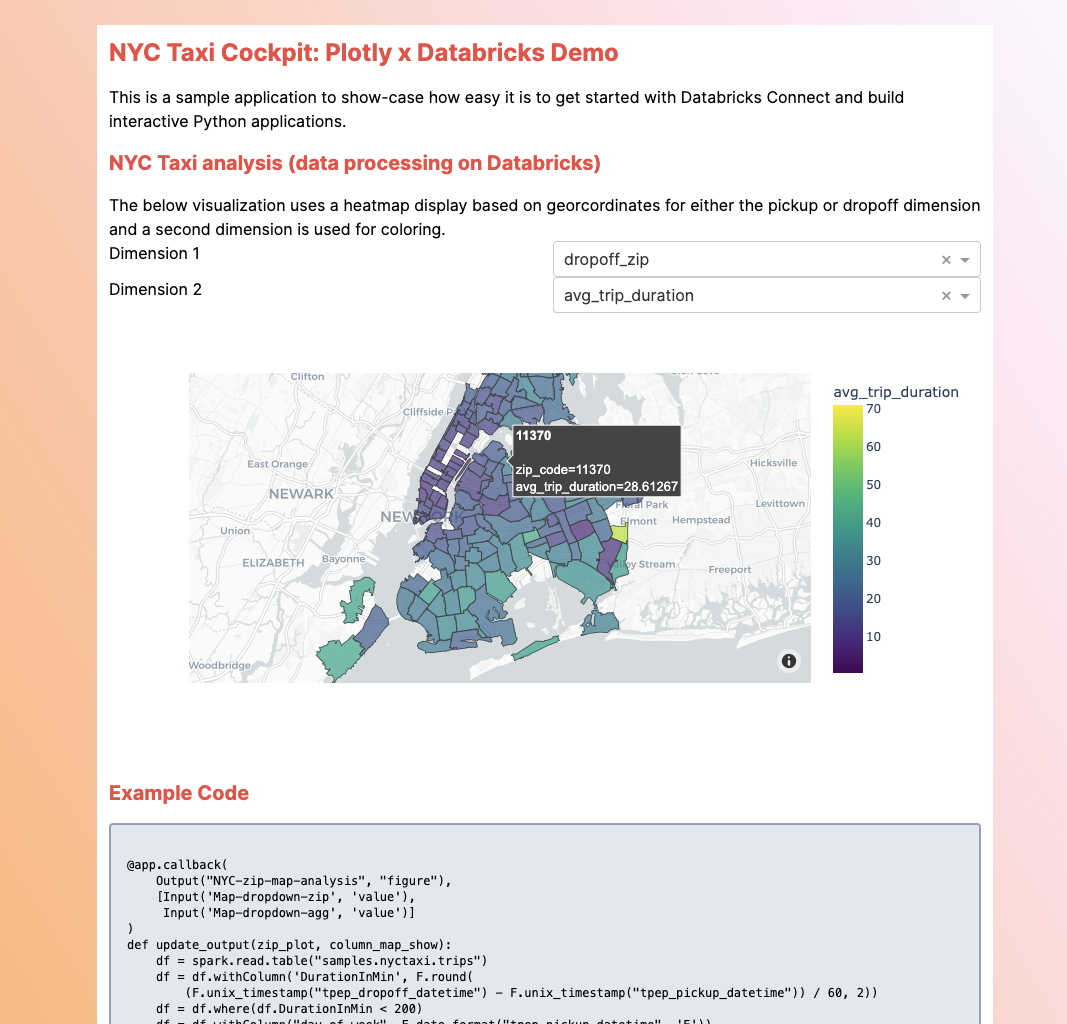This is a sample app on how to show how easy it is to build a new application using Databricks Connect and Plotly.
From DBR 13 onwards, Databricks Connect is now built on open-source Spark Connect. Spark Connect introduces a decoupled client-server architecture for Apache Spark™ that allows remote connectivity to Spark clusters using the DataFrame API and unresolved logical plans as the protocol. With this new architecture based on Spark Connect, Databricks Connect becomes a thin client that is simple and easy to use! It can be embedded everywhere to connect to Databricks: in IDEs, Notebooks and any application, allowing customers and partners alike to build new (interactive) user experiences based on their Databricks Lakehouse!
All you need to get started is a Databricks cluster and this simple Python
application. The dataset used in this application is the standard Databricks samples
dataset.
To get started, create a new virtual environment and install the reuired dependencies
pip install -r requirements.txt
To run the application, make sure that you have created a profile for your
workspace in the ~/.databrickscfg according to the documentation
and crearted a cluster with at least Databricks Runtime 13.0 and above.
In the app.py file configure the values for PROFILE, CLUSTER_ID accordingly.
from databricks.connect.session import DatabricksSession as SparkSession
from databricks.sdk.core import Config
config = Config(profile="PROFILE", cluster_id="CLUSTER_ID")
spark = SparkSession.builder.sdkConfig(config).getOrCreate()Now, run the plotly app
python app.pyThis sample application is meant for illustration purposes only. The application uses the follwing third-party dependencies:
- Plotly / Dash - https://github.com/plotly/dash - The MIT License (MIT)
- Tailwind CSS - https://github.com/tailwindlabs/tailwindcss - - The MIT License (MIT)
